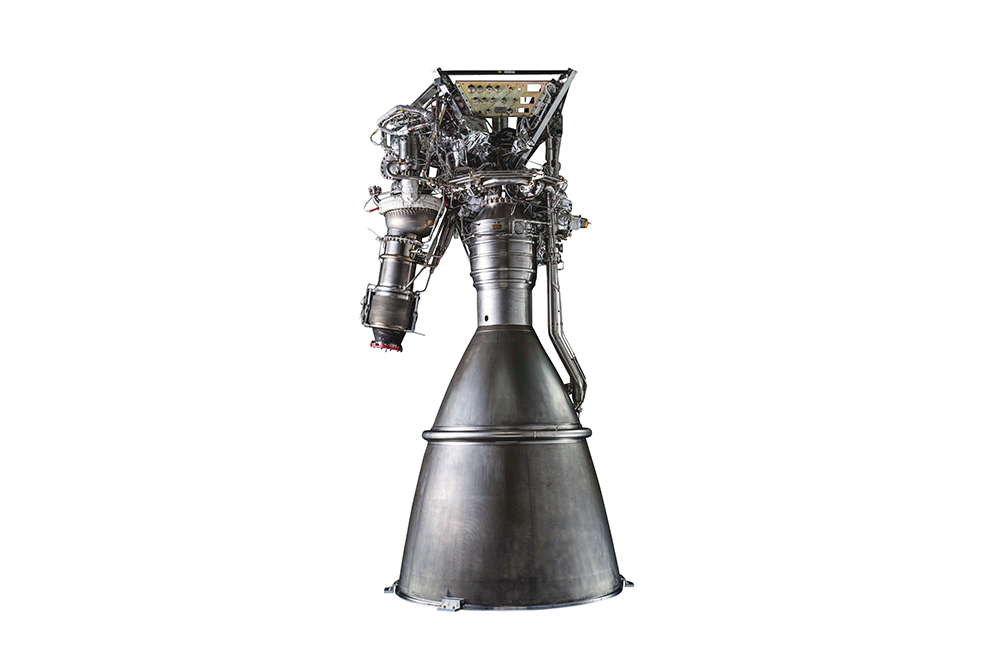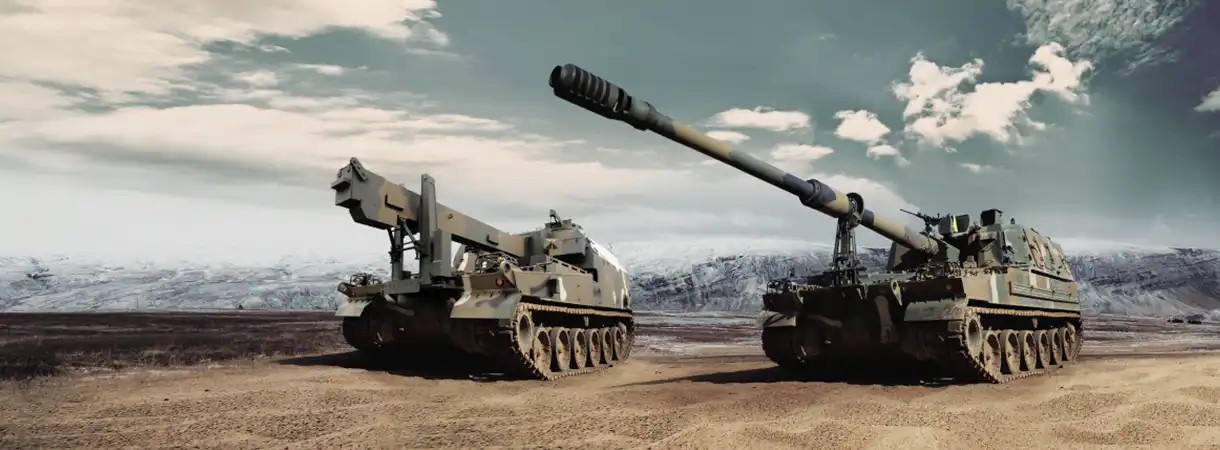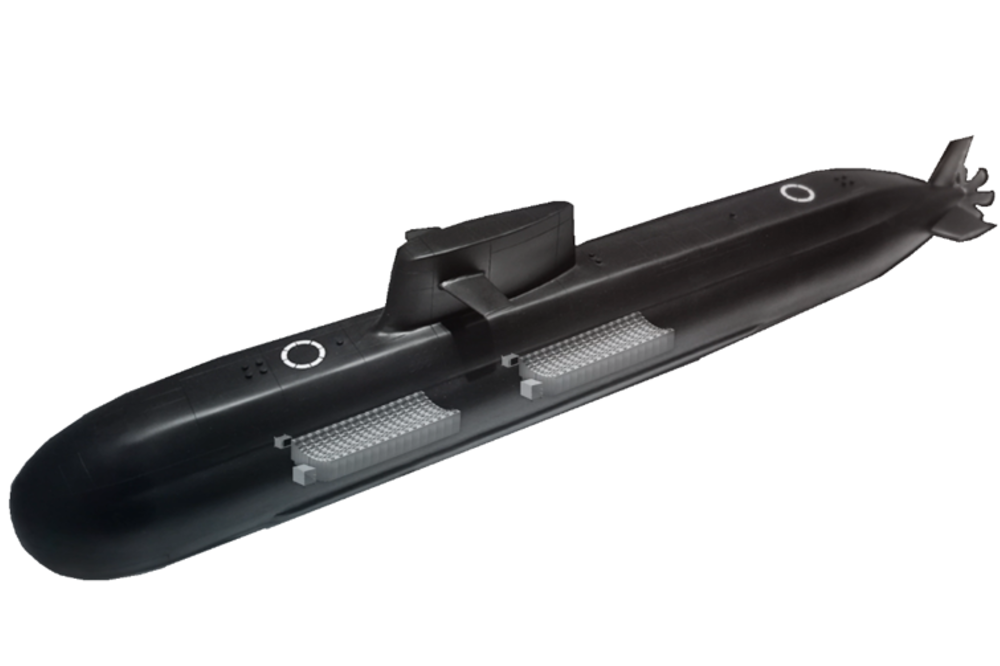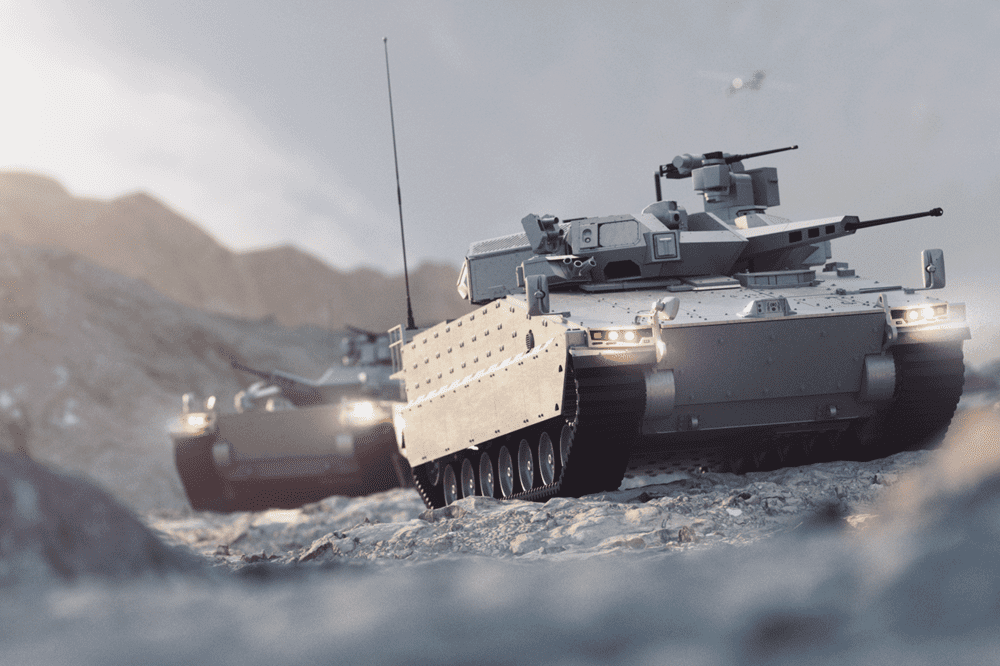Hanwha Aerospace

- Space: Integrating vehicle launch systems; manufacturing space vehicle engines; parts and components (valves, attitude control systems); space launch and transportation; and satellite systems, communications, and observation.
- Aviation: Assembling & maintaining aircraft gas turbines; parts and components (driving, landing, hydraulics, and fuel); commercial engine parts and components (long-term agreements (LTA)); risk and revenue sharing programs (RSP), and modules; and electric propulsion systems (energy storage system (ESS), electric engines (EE), electro-mechanical actuation (EMA), hydrogen fuel cells) for future mobility.
- Defense: Artillery systems, armored vehicles, launch systems, air defense systems, naval system, manned-unmanned teaming (MUM-T), remote fire control systems (FCS), navigation systems, advanced ammunition systems, precision guided munitions (PGM), and lasers.
- Marine: Lithium-ion ESS for submarines and ships, and ship engines/generators.
Since founded in 1977, Hanwha Aerospace has become a leading company in South Korea by expanding its business into spaceㆍaviation and defense. With an unwavering focus on customer-centric quality management, technological innovation, and product competitiveness reinforced by advanced technologies, the company is surging forward as a global leader by providing total solutions that speak to needs in both the commercial field (space and aviation) as well as those in defense (land, naval, and air).
For 25 years, Hanwha Aerospace’s business has advanced in line with Korea’s journey in space development. Starting with the development of the Korean Sounding Rocket-III (KSR-III) in 1999, our journey bore fruit in June 2022 with the successful launch of Nuri (KSLV-II), an indigenous space vehicle. This remarkable milestone turned South Korea into the seventh country in the world to put a 1.5-ton satellite into orbit with indigenous technologies. With unrivalled space engine manufacturing capability, the company has played a critical role in producing key components, including the 75-ton liquid rocket engine, fuel feed valves, and attitude control systems, improving the country’s space technological prowess, and enhancing the space sovereignty of South Korea.
In December 2022, Hanwha Aerospace was appointed the system integrator for KSLV upgrades in recognition of our business acumen and technological expertise. In 2023, it successfully participated in the third launch of the KSLV-II rocket after upgrading the indigenous space vehicle. The company aims to launch four additional vehicles by 2027, an achievement that will upgrade existing technologies and solidify our presence in the space industry ecosystem.
In April 2024, the Korean government selected Hanwha Aerospace as the system integrator of a project developing the next-generation space vehicle called KSLV-III. The KSLV-III Project is a follow-up project to the KSLV-II Project, and Hanwha Aerospace, in cooperation with the Korean Aerospace Research Institute (KARI), will participate in all development processes from design to launch, aiming to complete a challenging mission: sending a lunar module to the Moon by 2032. With our technological expertise and lessons learned from the KSLV-III Project, Hanwha will lead the way in creating a private-centered aerospace ecosystem and make inroads into the global space vehicle market.
In addition to developing space vehicles, Hanwha Aerospace is also focused on building an aerospace value chain. As part of that effort, Hanwha acquired shares of Satrec Initiative in 2021, a competitive South Korean satellite company which developed Space Eye-T, a constellation of elite-resolution Earth observation satellites. By utilizing collected satellite data, both Hanwha and Satrec Initiative are working together to find future business development opportunities in adjacent fields. As a key affiliate of Hanwha’s Space Hub, Hanwha Aerospace is actively exploring a variety of future business opportunities that build on the Group’s existing strengths and combine them with the burgeoning space industry.
As Korea’s only company specializing in aircraft gas turbine engines, Hanwha Aerospace continues to make advancements in the industry. Since starting with D-level gas turbine maintenance in 1979, Hanwha has expanded its business to provide aircraft engines and component solutions for both South Korean and international markets. For almost half a century, Hanwha has produced over 10,000 engines, including engines of key aircraft in the Republic of Korea (ROK) Air Force such as the F-15K and the T-50 advanced jet trainer, as well as the indigenous engines of the ROK Army’s utility helicopter (KUH) Surion.
Through technical partnership with GE, the company is at the helm of developing an integrated engine for the KF-21, a South Korean fighter jet, while localizing its key components. Furthermore, based on our KF-21 engine development experience, Hanwha Aerospace will enhance exclusive development capabilities for advanced aircraft engines that can be applied to KF-21 Block 3-class manned-unmanned fighters in the future. We will also expand the aerospace business value chain, including the development of materials for advanced engines.

Advanced jet trainer/light fighter engine (F404-102)

The 75-ton liquid propellant engine for Nuri, the Korea Space Launch Vehicle - Ⅱ
Building on our extensive expertise in aircraft engine technology in the field of civil aviation, Hanwha Aerospace has strengthened its competitive stance worldwide, maintaining close partnerships with key global aviation original equipment manufacturers (OEMs) such as GE, Rolls-Royce, and Pratt & Whitney. It continues to expand its global networks by establishing overseas production subsidiaries. In 2016, the company founded a joint venture with Pratt & Whitney in Singapore (PWMS) and joined a revenue sharing program (RSP) to co-design next-generation aircraft engines. In 2017, it built a production plant in Vietnam to improve cost competitiveness and production capacity. We then acquired EDAC Technologies, a U.S. aircraft engine component manufacturer, in 2019. Shortly after, we launched Hanwha Aerospace USA to expand our product portfolio and to advance our precise processing technology.

K10 Ammunition Resupply Vehicle and K9 Thunder SPH artillery system
Hanwha Aerospace is emerging as a global leader in the defense industry with unique and cutting-edge technological competitiveness in land systems and precision guided munitions. Recently, the K9 Thunder, a world-class indigenous self-propelled howitzer, has been successfully tested and evaluated in more than 10 countries, including the U.S., demonstrating its unrivalled firepower, maneuverability, and survivability. It is currently in operation in 10 countries, including Poland and Romania.
Hanwha is also preparing for fast-changing future battlefields by integrating high-reactive firing technology within the K9 with manned-unmanned combined operations. The company has unrivalled technological expertise in key components of 155-millimeter (mm) artillery shells such as fuses and propelling charges. In 2023, we secured a contract with the U.K.’s BAE Systems to provide NATO-standard modular charge systems (MCSs), showcasing our ability to meet the growing worldwide need for ammunition.

Lithium-ion battery systems for submarines

Redback, next-generation infantry fighting vehicle (IFV)
Chunmoo, Hanwha Aerospace’s multi rocket launcher system (MRLS), is the product of the first system development project led by a defense company system in South Korea. Chunmoo’s unmatched capabilities, such as real-time wide precision strikes against key targets led to a significant deal in 2022 with Poland for its procurement. Additionally, in 2023, Hanwha was awarded another contract with Australia for its next-generation infantry fighting vehicle (IFV), Redback, as part of the country’s Land 400 Phase 3 initiative. This contract also demonstrated the company’s competitiveness over contenders in land systems. Furthermore, the ROK Army’s main armored vehicle, the K21, and the advanced armored wheeled vehicle, Tigon, fulfill their missions with excellent mobility and the safe transportation of troops. Hanwha Aerospace is seeking to enter international markets with the Chungum anti-tank guided missile. The missile, which is equipped on a light armored helicopter (LAH), is being adapted for use with ground platforms such as the Redback, armored vehicles, and unmanned search vehicles.
Additionally, Hanwha Aerospace is developing MUM-T systems to enhance combat efficiency and reduce casualties on future battlefields. In December 2023, the company’s Autonomous and Robotic Systems for Intelligence Off-road Navigation-Small Multi-purpose Equipment Transport (Arion-SMET), a proprietary multipurpose unmanned ground vehicle (UGV), successfully completed Foreign Comparative Performance Testing (FCT) by the U.S. Marine Corps at the Marine Corps Training Area Bellows (MCTAB) in Hawaii, demonstrating its various autonomous driving functions and transportation capabilities.

Chunmoo
For air defense, Hanwha Aerospace is advancing the development of best-in-class systems tailored to counter and shield against a spectrum of aerial threats. These include the short-range air defense system H-SHORAD, the medium-range surface-to-air missile system M-SAM, also known as Chungoong, and our long-range surface-to-air missile system, L-SAM, which together fortify South Korea’s air defense capabilities and form a critical component of the country’s missile defense strategy.
Hanwha Aerospace is at the forefront of developing a sustainable marine ecosystem through its eco-friendly ESS technology. The company’s electronic propulsion system (EPS), a cornerstone of its maritime solutions, incorporates top-tier safety technologies and is the exclusive supplier of lithium battery systems for submarines. Leveraging its expertise in providing eco-friendly ESS for military submarines and commercial ships, Hanwha Aerospace is enhancing its presence in the global green shipping industry in conjunction with Hanwha Ocean’s expertise in shipbuilding, offshore plants, and specialized naval ships.
In the future, Hanwha Aerospace will broaden its ESS product range to include hydrogen fuel cell systems for submarines and civilian vessels. This initiative will bolster business competitiveness and establish an eco-friendly maritime value chain to support global decarbonization. The company also supplies reliable and efficient naval ship engines (LM 2500, LM 500) and generators (gas turbines) for the ROK Navy’s key assets, including destroyers and patrol ships. These contributions are essential in reinforcing naval capabilities in maritime battlefields.
Hanwha Aerospace offers total maintenance, repair, and overhaul (MRO) solutions to assist customers in operating products efficiently and effectively, leveraging its manufacturing and R&D capabilities. The MRO business features a well-organized system that spans the entire process — from local depot-level (D-lv) maintenance and performance enhancements, performance-based logistics (PBL) support, to diagnostics and the supply of repair parts — ensuring the highest operability of clients’ equipment. Capitalizing on decades of success and unparalleled expertise in the MRO industry, Hanwha is set to expand its MRO business and become a global provider of total MRO solutions.
Hanwha Aerospace will persist in enhancing the competitiveness of its current businesses while developing future core technologies in advance to secure market leadership and establish itself as a top-notch, innovative company.
Get the latest news about Hanwha, right in your inbox.
Fields marked with * are mandatory.
- Non-employee
- Employee

